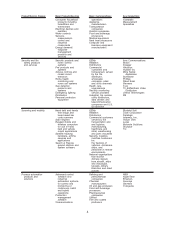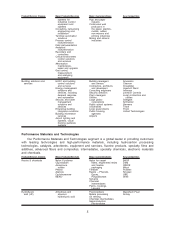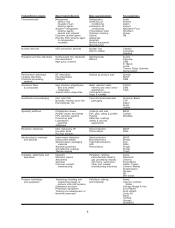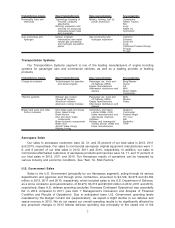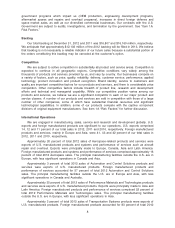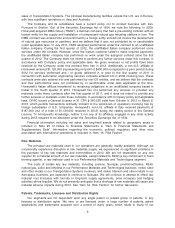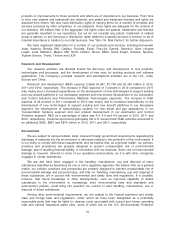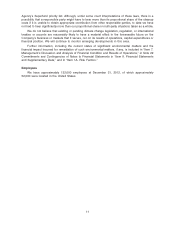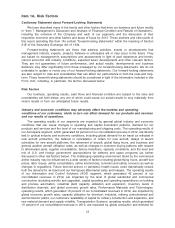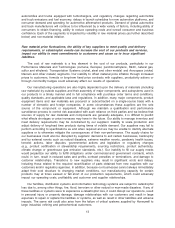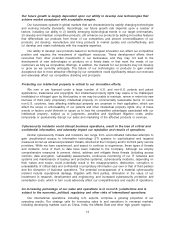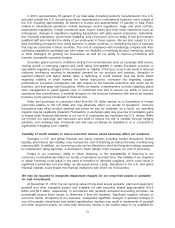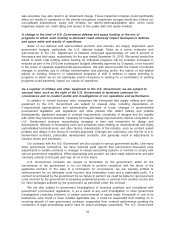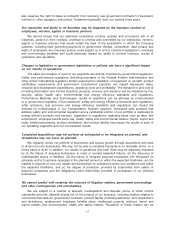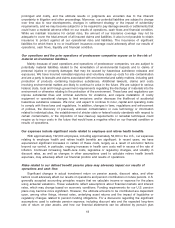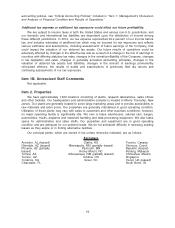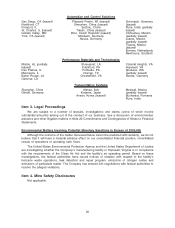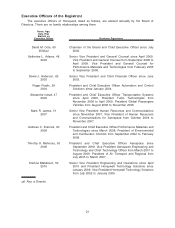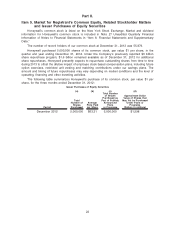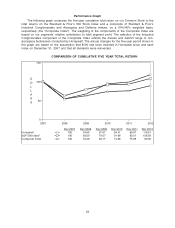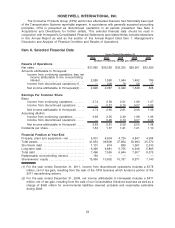Honeywell 2012 Annual Report Download - page 23
Download and view the complete annual report
Please find page 23 of the 2012 Honeywell annual report below. You can navigate through the pages in the report by either clicking on the pages listed below, or by using the keyword search tool below to find specific information within the annual report.Our future growth is largely dependent upon our ability to develop new technologies that
achieve market acceptance with acceptable margins.
Our businesses operate in global markets that are characterized by rapidly changing technologies
and evolving industry standards. Accordingly, our future growth rate depends upon a number of
factors, including our ability to (i) identify emerging technological trends in our target end-markets,
(ii) develop and maintain competitive products, (iii) enhance our products by adding innovative features
that differentiate our products from those of our competitors and prevent commoditization of our
products, (iv) develop, manufacture and bring products to market quickly and cost-effectively, and
(v) develop and retain individuals with the requisite expertise.
Our ability to develop new products based on technological innovation can affect our competitive
position and requires the investment of significant resources. These development efforts divert
resources from other potential investments in our businesses, and they may not lead to the
development of new technologies or products on a timely basis or that meet the needs of our
customers as fully as competitive offerings. In addition, the markets for our products may not develop
or grow as we currently anticipate. The failure of our technologies or products to gain market
acceptance due to more attractive offerings by our competitors could significantly reduce our revenues
and adversely affect our competitive standing and prospects.
Protecting our intellectual property is critical to our innovation efforts.
We own or are licensed under a large number of U.S. and non-U.S. patents and patent
applications, trademarks and copyrights. Our intellectual property rights may expire or be challenged,
invalidated or infringed upon by third parties or we may be unable to maintain, renew or enter into new
licenses of third party proprietary intellectual property on commercially reasonable terms. In some
non-U.S. countries, laws affecting intellectual property are uncertain in their application, which can
affect the scope or enforceability of our patents and other intellectual property rights. Any of these
events or factors could diminish or cause us to lose the competitive advantages associated with our
intellectual property, subject us to judgments, penalties and significant litigation costs, and/or
temporarily or permanently disrupt our sales and marketing of the affected products or services.
Cybersecurity incidents could disrupt business operations, result in the loss of critical and
confidential information, and adversely impact our reputation and results of operations.
Global cybersecurity threats and incidents can range from uncoordinated individual attempts to
gain unauthorized access to information technology (IT) systems to sophisticated and targeted
measures known as advanced persistent threats, directed at the Company and/or its third party service
providers. While we have experienced, and expect to continue to experience, these types of threats
and incidents, none of them to date have been material to the Company. Although we employ
comprehensive measures to prevent, detect, address and mitigate these threats (including access
controls, data encryption, vulnerability assessments, continuous monitoring of our IT networks and
systems and maintenance of backup and protective systems), cybersecurity incidents, depending on
their nature and scope, could potentially result in the misappropriation, destruction, corruption or
unavailability of critical data and confidential or proprietary information (our own or that of third parties)
and the disruption of business operations. The potential consequences of a material cybersecurity
incident include reputational damage, litigation with third parties, diminution in the value of our
investment in research, development and engineering, and increased cybersecurity protection and
remediation costs, which in turn could adversely affect our competitiveness and results of operations.
An increasing percentage of our sales and operations is in non-U.S. jurisdictions and is
subject to the economic, political, regulatory and other risks of international operations.
Our international operations, including U.S. exports, comprise a growing proportion of our
operating results. Our strategy calls for increasing sales to and operations in overseas markets,
including developing markets such as China, India, the Middle East and other high growth regions.
14


